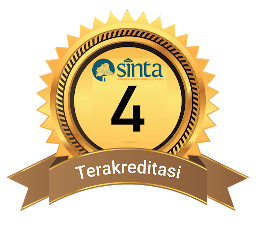The Study of Chemistry Learning at SMAN 1 Narmada inThe Midst of The Covid-19 Outbreak School Year of 2020
DOI:
10.29303/cep.v7i2.5000Published:
2024-11-30Issue:
Vol. 7 No. 2 (2024): Edisi NovemberKeywords:
Study, Learning, ChemistryArticles
Downloads
How to Cite
Abstract
This study aims to describe the planning, implementation, and obstacles to learning chemistry during COVID-19 at SMAN 1 Narmada school year 2020. This type of research is descriptive, using qualitative and quantitative approaches. The sampling technique used non-probability sampling with a purpositive sampling type. Retrieval of data about students’ chemistry learning using a questionnaire and the teacher by conducting interviews. The data analysis technique is done by calculating the percentage of the results obtained: the planning teacher prepares a new RPP to adapt to the learning situation by changing some aspects of the RPP. The implementation, in a row, preliminary activities, core activities, and closing activities of 73%, 70%, and 72% are included in the criteria of good enough. Chemistry learning obstacles of 83% included in the very high category.
References
Artapati, L. W., & Budiningsih, C. A. (2017). Pelaksanaan Pembelajaran Kurikulum 2013 di SD Negeri Serayu Yogyakarta. Jurnal Inovasi Teknologi Pendidikan, 4(2), 185-200.
Astuti, P. (2010). Pembelajaran kimia menggunakan media bongkar pasang konfigurasi elektron dan komputer ditinjau dari kreativitas dan gaya belajar siswa (Doctoral dissertation, UNS (Sebelas Maret University).
Dewi, R.K. (2022). Analisis kebutuhan media pembelajaran berbasis E-learning pada mata pelajaran kimia di SMA negeri 8 semarang. Jurnal Inovasi Pendidikan Kimia: 16(2), 118-122.
Dewi, W. P., Ramadhiani, D. A., Mukarromah, K., Rahayu, M., & Aeni, A. N. (2022). Efektifitas pelaksanaan pembelajaran terpadu di sekolah dasar selama pandemi covid-19 berdasarkan perspektif guru. Jurnal Cakrawala Pendas, 8(1), 82-93.
Eliza, W., & Yusmaita, E. (2021). Pengembangan butir soal literasi kimia pada materi sistem koloid kelas XI IPA SMA/MA. Jurnal Eksakta Pendidikan (Jep), 5(2), 197-204.
Fatimatuzahroh, F., Nurteti, L., & Koswara, S. (2019). Upaya meningkatkan hasil belajar peserta didik pada mata pelajaran akidah akhlak melalui metode lectures vary. Jurnal Penelitian Pendidikan Islam,[SL], 7(1), 35-50.
Fitri, A.E., Sri, S. dan Nesna, A. (2017). Perencanaan Pembelajaran Kurikulum 2013 Pendidikan Anak Usia Dini. Jurnal Potensia, PG-PAUD FKIP UNIB: Vol.2. No.1.
Hakim, A. R., & Oktaviona, S. (2023). Analisis Pelaksanaan Pendekatan Saintifik dalam Pembelajaran IPA di SMPN 1 Jenangan Ponorogo. Al Kawnu: Science and Local Wisdom Journal, 2(2).
Harahap, S.H., Sunendar, D., Sumiyadi, S., & Damaianti, V.S. (2020). Pembelajaran Sastra: Berbagai Kendala dalam Bermain Drama Bagi Mahasiswa. Jurnal Babastra, 9(1), 114-122.
Jaya, F. (2019). Perencanaan pembelajaran.
Mulyadi, T., Pranawukir, I., Sovianti, R., Mediwinata, A. F., Alfiyanto, A., & Hidayati, F. (2022). Pelaksanaan Pemeliharaan Sarana dan Prasarana Pendidikan pada Madrasah Ibtidaiyah. At-Tafkir, 15(1), 98-117.
Murfiandani, Q. (2021). Keefektifan Model Pembelajaran Discoveru Learning Berbantu Media Multilink Kubus Terhadap Hasil Belajar Siswa Pada Materi Persamaan Reaksi Di SMA Negeri 5 Aceh Barat Daya (Doctoral dissertation, FaKultas Tarbiyah dan Keguruan UIN Ar-Raniry).
Octavia, S. A. (2020). Model-model pembelajaran. Deepublish.
Pebrianti, R. A. (2020). Analisis Gaya Mengajar Guru pada Pelaksanaan Model Pembelajaran Tematik Terpadu di MI Nahdlatul Ulama, Gribig, Gebog, Kudus (Doctoral dissertation, IAIN KUDUS).
Supardi,V. S., Machmud, R., & Gusty, R.P. (2018). Analisis Pelaksanaan Managemen Pencegahan dan Pengendalian Healthcare Associated Infection di RSI Ibnusina. Jurnal Endurance: Kajian Ilmiah Problem Kesehatan, 3(2), 358-366.
Tanaka, A., Gani, R. A., Kom, S., Andani, F., Martini, E., Udin, D. T., ... & Pt, R. O. S. (2023). Perencanaan pembelajaran. Selat Media.
Ulfa, W. (2024). Analisis Kendala Pembelajaran Kimia Menggunakan Model Context Input Process Product (CIPP) Di Madrasah Aliyah Swasta Kota Pekanbaru (Doctoral dissertation, Universitas Islam Negeri Sultan Syarif Kasim Riau).
Widiyanto, I. P., & Wahyuni, E. T. (2020). Implementasi perencanaan pembelajaran. Satya Sastraharing: Jurnal Manajemen, 4(2), 16-35.
Author Biographies
Nurul Syahraini, Pendidikan Kimia, FKIP, Universitas Mataram
Muntari Muntari, Pendidikan Kimia, FKIP, Universitas Mataram
License
Copyright (c) 2024 Nurul Syahraini, Wildan Wildan, Muntari Muntari, Jeckson Siahaan

This work is licensed under a Creative Commons Attribution-ShareAlike 4.0 International License.
Authors who publish with Chemistry Education Practice agree to the following terms:
- Authors retain copyright and grant the journal right of first publication with the work simultaneously licensed under a Creative Commons Attribution License 4.0 International License (CC-BY-SA License). This license allows authors to use all articles, data sets, graphics, and appendices in data mining applications, search engines, web sites, blogs, and other platforms by providing an appropriate reference. The journal allows the author(s) to hold the copyright without restrictions and will retain publishing rights without restrictions.
- Authors are able to enter into separate, additional contractual arrangements for the non-exclusive distribution of the journal's published version of the work (e.g., post it to an institutional repository or publish it in a book), with an acknowledgement of its initial publication in Chemistry Education Practice.
- Authors are permitted and encouraged to post their work online (e.g., in institutional repositories or on their website) prior to and during the submission process, as it can lead to productive exchanges, as well as earlier and greater citation of published work (See The Effect of Open Access).






